|
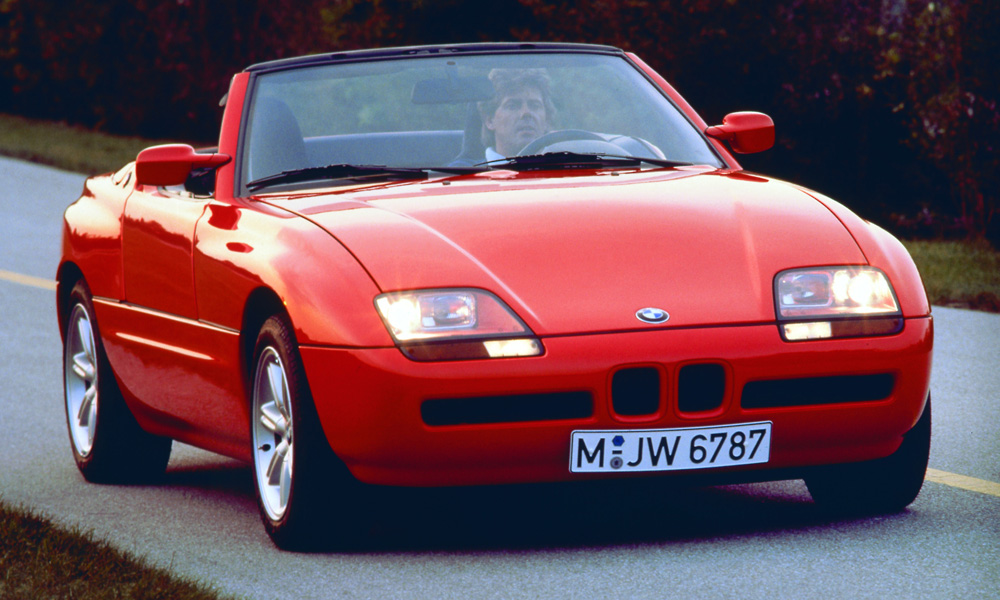
BMW Z1 (1988-1991)
BMW reconnected with the successful roadster tradition when it launched the BMW Z1 in 1988. The BMW Z1 was the first complete development by
the "ideas factory" BMW Technik GmbH. It was built between 1988 and 1991 and the innovative chassis and aerodynamic body gave this car superior
handling characteristics. The second representative of the BMW Z Series, the Z3, was presented in 1995 as a roadster and as a coupé. Ultimately,
the BMW tradition of sporty two-seaters found its most modern interpretation in the BMW Z4. Dynamic proportions and a powerful engine epitomise the roadster and the coupé in this successful series.
It was a true quantum leap: when BMW unveiled the Z1 to the international motoring press in the Italian town of Punta Ala back in autumn 1988, its
direct predecessor was parked in the hotel's inner courtyard a BMW 507 from the late 1950s, the last time the BMW model range had included a
two-seater sports car. The leap through time to the Z1 was in fact even greater than the intervening period of 30 years or so would suggest. Its
avant-garde solutions looked way ahead into the future indeed, some of its most revolutionary ideas are as unique now as they were then.
It had all begun with a very bold idea. The BMW Board of Management came up with the notion of setting up a kind of think tank in a cutting-edge
company branch that would be completely isolated from all other development departments. The idea was to give highly skilled BMW engineers,
technicians and designers free rein to work on turning their best creative concepts into reality themselves.
At the start of 1985, the idea came to fruition. Not five minutes' drive from the Group's headquarters, a highly dedicated high-tech company came
into being that has long since become a role model the world over: BMW Technik GmbH, known internally simply by the letters ZT. Just six months
later, the 60-strong team delivered exactly what had been hoped for: concrete concepts designed to inject car manufacture with new impetus, all
under the umbrella of a pilot project for employing new materials, using different types of vehicle structure and shortening development times. It didn't take long to coin a name for it: the Z1.
Pilot project sells itself: Z1 looks increasingly likely to go into production.
The project really sold itself. Initially, no one had dreamed of putting into production a concept car in the guise of a sleek roadster but it was just
too good and the thought of a new BMW sports car too enticing. The BMW Board of Management gave the green light, and almost 12 months later to
the day, there was more than just a styling model to admire the first roadworthy prototype was ready, too. On 1 August 1986, BMW went public
and announced: "BMW Technik AG has completed its first product. The BMW Z1, a vehicle study, was conceived on the basis of specifications which
build on longstanding BMW traditions at the same time as factoring in future mobility requirements."
One glance was enough to know exactly what the superbly proportioned sporty two-seater was meant to build on: there were increasing calls from
customers for a roadster that would continue the legacy of BMW's legendary sports cars of the past. The 328 and 507 had long since gone into the
history books as sporting and style icons, and there had been nothing to take their place for several decades. It was time to fill the gap with
something right up to date. As the press release stated: "BMW Technik was commissioned by the Board of Management of BMW AG to devise and
execute a vehicle concept which would largely satisfy the desire for 'freedom on four wheels', driving pleasure and performance." The fundamental
driving experience should clearly take precedence, rather than adopting the comfort-focused approach that prevailed in competitors' sports car
concepts throughout the 1980s. "Young", "dynamic" and "brash" should be the words that best described the Z1, along with "a new dimension in
driving". Trademark BMW roadster attributes were adopted and fused with the latest technology. Ingredients included superior performance, the
ability to drive with the roof down, a sense of sheer originality and a dash of extravagance. The Z1 had all the right credentials: low weight and low
centre of gravity, front mid-engine and compact dimensions. The highlight though was without doubt its pioneering technology: the unique vertical
sliding door concept and the supporting sheet-metal structure with a plastic outer skin.
Demand wins the day: the roadster is to be built by hand.
The response was overwhelming the company was inundated with inquiries from customers, while there was a great deal of public speculation about
whether BMW had the courage to actually build the car. Whereas BMW kept silent on the matter, development for series production was already in
full swing behind closed doors. It was obvious that the Z1 would have to be built largely by hand on account of its unusual design characteristics and
the materials used. This, in turn, meant a small production run and a high price tag. Nevertheless, the BMW Board of Management pushed ahead with the launch.
Almost exactly two years after finalising the Z1 concept and one year on from the study's unveiling, BMW laid its cards on the table when it made the
following announcement on 10 August 1987: "The time for speculation is over, the guessing game has come to an end: BMW AG will be presenting the
Z1 Roadster at the Frankfurt Motor Show." Speeding up the development process had been a pilot task for this project, and after a development time
of just three years a limited number of the 170 hp front mid-engined sports car would go into small-scale production from June 1988. "Once the
custom-built production process is up and running at full capacity, up to six car enthusiasts a day will be able to start enjoying undiluted driving pleasure instead of just dreaming about it."
The ink had barely dried on the announcement when the advance orders started to stream into Munich. The Frankfurt Motor Show hadn't even
started when a major motoring magazine wrote: "The groundswell of euphoria gives reason to suspect that the last person to place an immediate
order won't get their hands on their Z1 until the year 2000!" BMW gave a small group of top journalists a preview of just what would make the new
roadster one of a kind. The Director of BMW Technik GmbH at that time, Ulrich Bez, gave an emphatic demonstration of the benefits of the plastic
panelling: he jumped with both feet onto a vehicle wing lying on the floor, which promptly buckled then sprang back to its original shape when he stepped off it again.
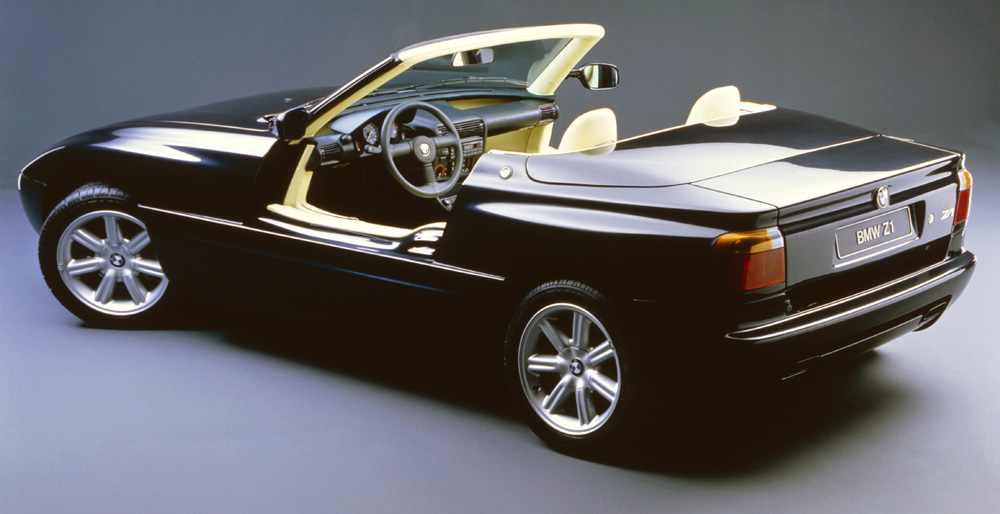
BMW's historic 1987 Frankfurt Motor Show: first V12, first 3 Series Touring, first Z Roadster.
When the show finally opened its doors on 11 September, visitors descended on the BMW stand in their hoards to behold a unique collection of firsts
all set to go down in motoring history: the 750i powered by Germany's first post-war 12-cylinder engine was marking its world premiere, as was the
first ever 3 Series Touring as it blazed a trail for a whole new breed of car, and, of course, the avant-garde Z1, the first BMW roadster for around 30
years. Set off to stunning effect by a wall of water as a backdrop, a German news magazine deemed it "probably the most photographed vehicle at the entire show".
With so many customers desperately eager to be among the first to order a Z1, a German motoring magazine decided to try its luck at buying the
Reed Green exhibit straight off the stand. But despite being offered DM 150,000 in cash, the BMW team stayed firm: it was simply not possible, as
the Z1 was one of just ten test vehicles, all of which were still urgently required. Besides this, the Z1 still had to undergo homologation testing, so
the roadster could not have been sold under any circumstances not even for the two million German marks the prototype had actually cost!
And so the waiting game started and went on for a good year, as it would be autumn 1988 before the Z1 went into production. The planned asking
price was DM 80,000. In the meantime, the potential clientele could seek solace in the first sales brochure entitled "For sheer driving passion: the BMW Z1 High-Tech Roadster".
October 1988: the Z1 a radically different approach to development and construction.
Finally, in October 1988, the time came. Dr Wolfgang Reitzle, Member of the Board of Management responsible for Research and Development at BMW
AG, saw the roadster as far more than just another new model. More importantly, it bore out the success of the innovative development structure
deployed at BMW: "As a result of the newly created interdepartmental work processes that have been implemented with our Research and
Technology Centre in association with Motorsport GmbH and Technik GmbH, BMW now has unique and highly efficient instruments at its disposal for
the development of new cars. The Z1 represents the first project where BMW has ventured beyond a pure vehicle project to test out and successfully employ revolutionary new approaches in this broader form."
The Z1 truly was different from the ground up. A self-supporting monocoque construction made up of individual sheet-steel parts constituted the
car's backbone. After it had been welded together, the entire frame was hot-dip galvanised in an immersion bath. Not only did this ensure seamless
corrosion protection for the monocoque, it made it substantially more rigid too: the coating of zinc that was applied acted as a connecting and
supporting element, especially around panel seams and joint overlaps. The effect was an increase in the monocoque's torsional resistance of around 25 per cent.
The second peculiarity of the Z1 bodyshell was the vehicle floor, which was bonded with the frame and partly bolted to it and made of plastic. In
collaboration with specialists from MBB now merged into EADS the Z1 engineers had developed a material which combined low weight with high
load-bearing capacity, was immune to corrosion, safe in a collision, and produced smooth underbody contours. The solution was a combination of
fibre-composite materials sandwiched together. The resulting structure of two layers of glass fibre-reinforced epoxy resin with polyurethane foam in between produced a floor assembly with a weight of just 15 kilograms.
This construction had the added advantage that the floor unit could be preassembled separately before being completely bonded with the vehicle
frame as well as bolted to the steel structure at certain points. Special bracing incorporated into the sandwich structure enabled high forces to be
applied in the vicinity of chassis mounting points and seat mountings, for instance. Indeed, the floor assembly increased the monocoque's static torsional resistance by a further ten per cent when installed.
With the additional help of the high, oversized side sills and the engine mounts, this structure stood out for its exceptional strength and outstanding
accident safety. A transverse tube in the dashboard area combined with the tube used to reinforce the windscreen frame to ensure highly effective
protection in the event of a side-on collision, too. And as the tube inserted into the windscreen frame formed a direct connection between the two A-pillars, it also doubled as roll-over protection.
New outfit in one hour flat: fully bolted outer skin of plastic panels.
Although the monocoque was roadworthy as it was, it was cloaked in plastic: indeed, the Z1 was the first model ever to feature a plastic exterior
whose vertical parts were all made of injection-moulded thermoplastics. Resilient and proven to be immune to damage, the panels were bolted into
place. In theory, with a complete second set of outer panels it would have been possible to convert a Z1 from red to blue in the space of an hour using nothing more than a screwdriver.
Different types of plastic were used for the panelling parts depending on their task. The front and rear sidewalls, the doors and the side sill covers
were made from a high-tech thermoplastic that was renowned for its high impact strength, almost completely eliminating the risk of bumps and dents
resulting from minor knocks. The panelling for the front and rear bumpers, on the other hand, possessed very different properties the highly elastic
plastic used here was able to fully regain its former shape following impacts at up to 4 km/h (2.5 mph).
The bonnet and boot lid as well as the soft-top compartment cover were made from special fibre composites. During the production of these plastic
components, different glass fabrics (depending on the demands that would be placed on the component), foam core sections as well as the
necessary fastenings, such as bolts and braces, were placed into the mould in a dry state. Once the mould had been closed, epoxy resin was
injected into it and compressed while being subjected to carefully controlled temperature sequences. Components manufactured in this way combined
excellent surface quality and high strength with precisely defined energy absorption in the event of an accident. Despite these advantages, the BMW
engineers acknowledged that "it would appear impossible in the foreseeable future to use a larger amount of plastic for making the exterior of mass-produced vehicles".
Special paintwork system with three different degrees of hardness.
The four possible paint finishes for the Z1 were not mere colours bearing the highly descriptive names of nature Green metallic, Dream Black metallic,
Fun Yellow and Top Red, their chemical composition was different too. Development work carried out in collaboration with the suppliers had led to the
creation of the Varioflex paintwork system, which catered to all the requirements when applying the paint to different plastic materials.
The conventional painting techniques for metal at that time hardly placed any special requirements on the paint in terms of its flexibility, as it was
relatively easy to obtain a high surface gloss and keep the colour consistent. Due to the differing requirements depending on the specific component
involved, the various plastic materials used on the BMW Z1, on the other hand, called for a paintwork system offering three different levels of
flexibility: high flexibility for the bumper and side sill panelling, medium flexibility for the doors and wings, and a hard coating of paint just like on a
metal body for the bonnet, boot lid and soft-top cover. While all components received the same base coat providing the actual colour of the car,
the parts were then painted with different clear coats, depending on the degree of elasticity required.
Unequalled even today: vertical sliding doors.
Viewed from the outside, the Z1 therefore had all the makings of a sophisticated-looking, but ultimately conventional roadster if it hadn't been for
its doors. These retracted electrically into the side sills, allowing both driver and passenger to cruise along with the door open if they wished, a
feature which has never been emulated since. "The car is so low and the flanks so deep that the driver of the new model is able to effortlessly pluck
sweet clover, plantains and other ground-hugging greenery from the wayside by simply leaning out," as one news magazine reported. What's more,
this particularly refreshing form of travel was both perfectly safe and legal into the bargain thanks to the ample side protection provided by the high sills.
The mechanism for the doors and side windows was driven by two electric motors and a toothed belt. The motors incorporated a freewheel function
to allow the doors and windows to be operated manually if necessary. To avoid burdening the actual door with additional weight, all of the electrical
and mechanical components were integrated in the car's body. A double mechanical lock acting on the doors in both opened and closed position
prevented rattling noise and excessive door movement while driving. The side windows could, of course, be lowered separately from the doors: after
the doors had been opened and closed again, the windows automatically returned to their previous position.
Sports car devoid of wings and spoilers: a paragon of aerodynamic design.
The Z1's appearance belied its true sporting talents. Originally conceived as an automotive test laboratory, outstanding aerodynamics had been a top
priority for development. The aim was to meet these targets without using the customary aerodynamic aids at that time such as spoilers and wings;
instead, the basic shape of the vehicle itself, including the underbody, was intended to achieve the desired results.
The very flat front end of the Z1, the smooth transitions on its bonnet and the windscreen raked at an angle of 62° provided all the right ingredients
for a smooth flow of air along the top of the car. The vehicle's perfectly smooth underbody formed a virtually continuous surface extending from the
front end through to the rear axle. The underside of the vehicle rose slightly towards the rear in the form of a diffuser, thereby directing the airflow
at the transverse rear silencer, which was shaped in the form of a wing to help reduce rear axle lift substantially.
The car's looks made no secret of the fact that it was something quite special. After all, one of the highlights of the innovative Z1 concept was an
up-to-date and highly attractive interpretation of the roadster concept. It marked a departure from the long, elongated shape of classic roadsters,
featuring instead short overhangs as well as a compact overall length relative to its wheelbase. The joints along the side panels were quite different
from the conventional design at that time. The new door concept produced a wide, joint-free side sill with an elevated entrance height, with the
upper edge of the bumpers and side sills forming a continuous line. The Z1 was tapered in around the doors, giving the wings a broad and flared
appearance that was reminiscent of the M3. The BMW kidney grille also sported an updated look, as it was fully integrated in the front bumper's contours, making it look smaller and more compact.
The new BMW roadster's interior appointments were highly functional in nature but, above all, very upmarket: the seats and door panels were all
trimmed in new high-class materials combined with fine leather. The low-slung seating position, bulky transmission tunnel and wide sills called for a
new technical concept for the Z1 seats, so the roadster was fitted with bucket-shaped all-foam seats affording the high levels of lateral support
needed to be able to put the sports car's outstanding cornering abilities to the test. Plastic shells painted to match the car's colour enveloped the
seat backrest, which had the headrest integrated into its outline. The driver's seat was height adjustable, and the passenger seat could be tilted forward to make better use of the through-loading facility.
Low centre of gravity, broad stance: "supreme driving pleasure".
The powertrain and chassis of the Z1 were largely inherited from the 3 Series. Hard at work under the bonnet was the classic BMW straight-six
engine, which mustered 170 hp from its 2.5-litre displacement and was fitted in a front-mid position. A central aluminium tube ran from the five-speed
manual gearbox to the rear differential to produce a torsionally and flexurally rigid link between the two. The single-joint spring-strut front axle taken
from the 3 Series handled the task of wheel location at the front, but a brand new construction was employed at the rear: a multi-link axle
comprising two transverse control arms and one longitudinal control arm. It was dubbed the "Z-axle" in German, which was shorthand for "centrally
guided, spherical double-wishbone axle" rather than a reference to the new model's name. The kinematic arrangement of the three control arms
ensured excellent directional stability as well as effective anti-squat and anti-dive control. This configuration endowed the Z1 with go-kart-like
handling characteristics, with the axle load split in the ratio 49:51 and the vehicle's centre of gravity located some ten centimetres lower than on comparable sedan models.
As a result, the Z1 was truly in its element as it wound its way along the twisting country roads of Central Italy around Punta Ala, earning it
unanimous praise. It was deemed to offer "supreme driving pleasure" and revered as a "textbook driver's car". As the assembled international car
testers at the presentation noted to their surprise, not even the poorer roads could trouble the chassis or provoke any tangible body torsion. The Z1
had a top speed of 225 km/h (140 mph) and could dart to 100 km/h (62 mph) from stationary in just under eight seconds. "For the Z1 driver, it is not
the sheer performance that makes the compact car so appealing," as one well-known tester reported, "rather it is the way in which this most
irrational of all BMW models drives. Nimble like a go-kart, instantaneous throttle response, goes round bends as if it's on rails it fits the driver like a
glove, making it so much fun to drive! The sensation generated by the raw motoring experience is further heightened by the fact that you are
virtually sitting out in the open air it's like a motorcycle on four wheels." The verdict: "It's one of the most fun cars we've ever driven, and that's
the absolute truth." And there was certainly no doubting the exceptional nature of the BMW roadster either. As one news magazine summed up: "It is
the most extraordinary BMW since the days of the one-door Isetta with its entrance between the front wheels."
The price for the Z1 had by now climbed to DM 83,000, but in no way did that deter the buyers. Some 4,000 orders had already been placed,
meaning the Z1 was already sold out until the end of 1990. And when the first production models rolled off the assembly line in early 1989, sales
contracts that were ready for delivery were already being advertised in newspapers for a premium of DM 20,000.
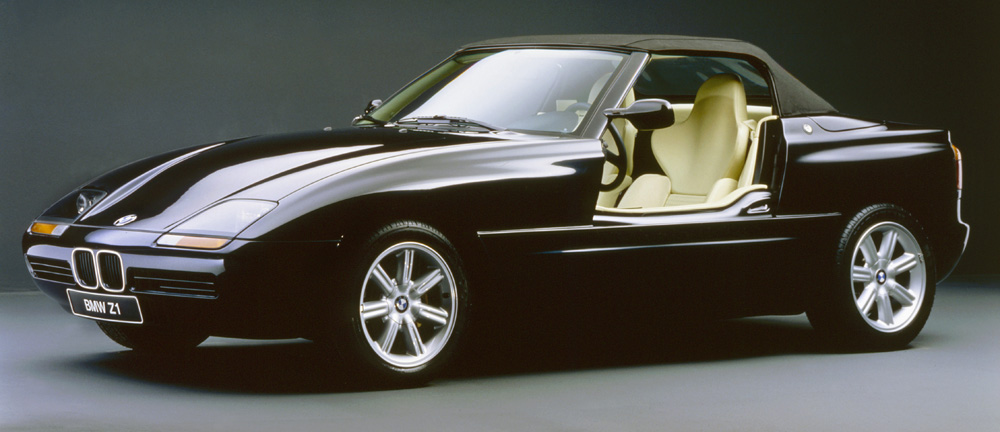
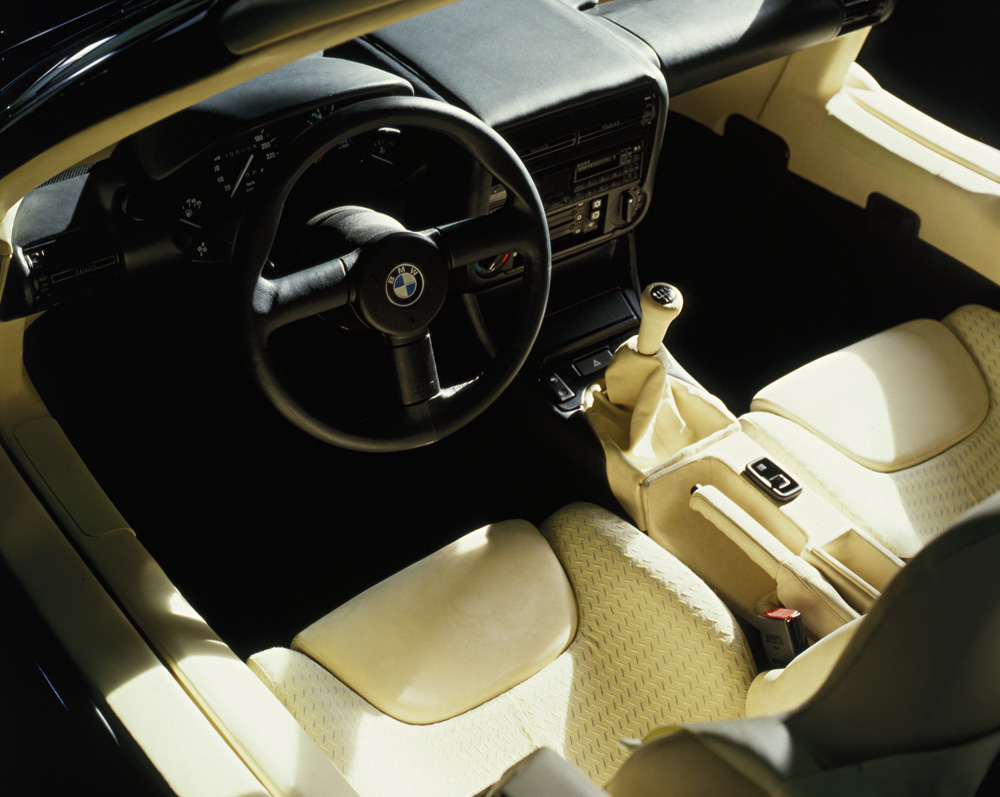
BMW Z1 General Data
Model Year.................................1988 - 1991
No. of Units................................8,000
Price..........................................DM 83,000
Technical Data
- Engine
Motortype..........................Six-cylinder in-line engine
Bore x Stroke (mm)..............84 x 75
Capacity............................2494 ccm
Performance.......................125 kW/170 bhp at 5800 rpm
Top speed..........................225 km/h (140 mph)
Compression.......................8.8:1
Valves...............................OHV
Carburetion system..............Bosch Motronic
- Powermode
Clutch...............................Single-plate dry clutch
Transmission.......................Five-speed manual transmission
Gearbox ratios.....................3.83 : 1 / 2.20 : 1/ 1.40 : 1 / 1.00 : 1 / 0.81 : 1
Reverse gear......................3.46 : 1
- Electric system
Generator...........................1120 W
Battery..............................12 V 65 Ah
- Suspension
Body/chassis......................Monocoque chassis with plastic bodyshell
Front-wheel suspension........Single-joint spring strut front axle with anti-dive, anti-roll bar
Rear-wheel suspension..........Z-design rear axle with anti-dive, anti-roll bar
Wheel rims..........................7 1/2 J x 16
Tyres.................................225/45 ZR 16
Front brakes........................Disc brakes, ventilated
Rear brakes.........................Disc brakes
- Measures and weight
Length x Width x Height (mm).3921 x 1690 x 1277
Wheel base (mm).................2447
Front track (mm).................1456
Rear track (mm)..................1470
Empty weight (kg)...............1250
Permissible total weight (kg)..1460
Fuel consumption (l/100 km)..9.4
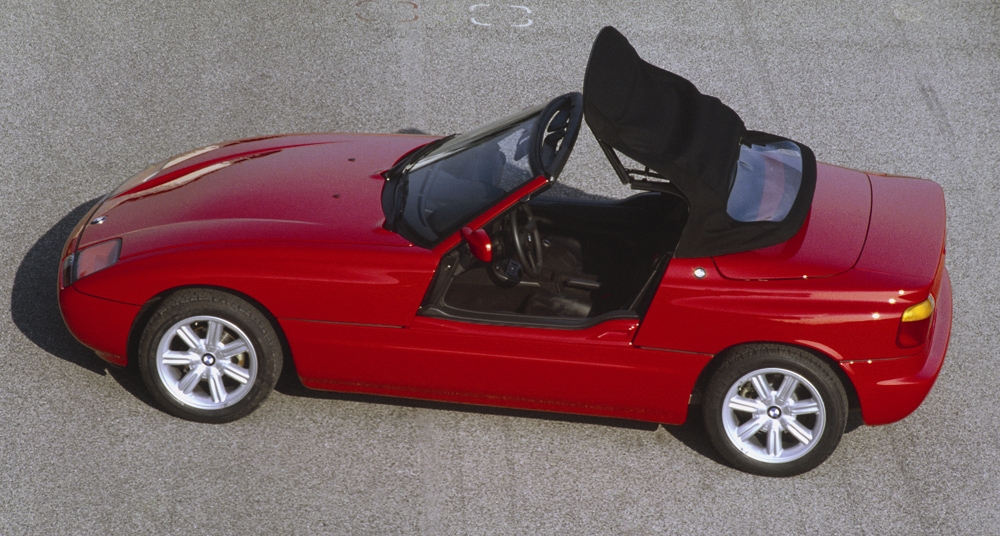
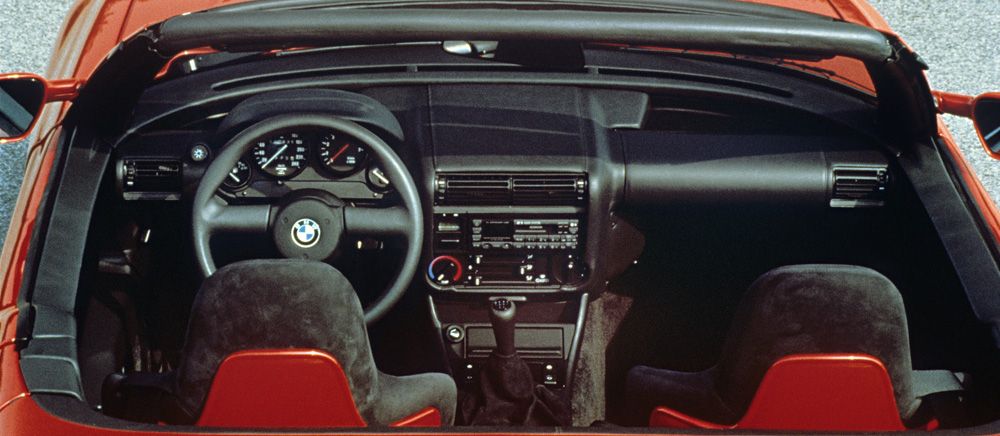
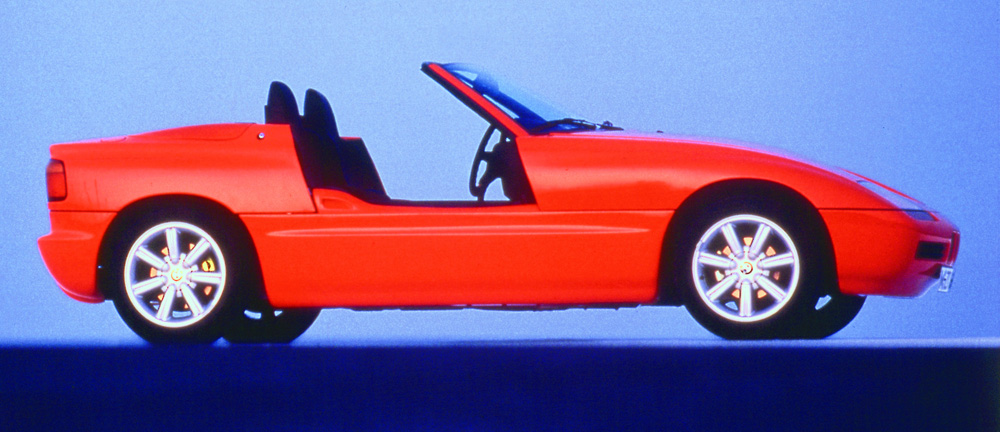
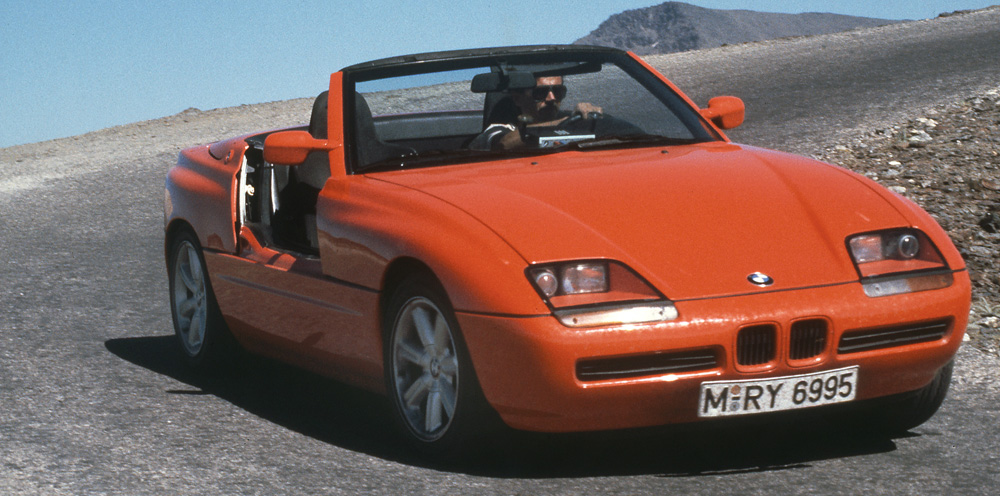
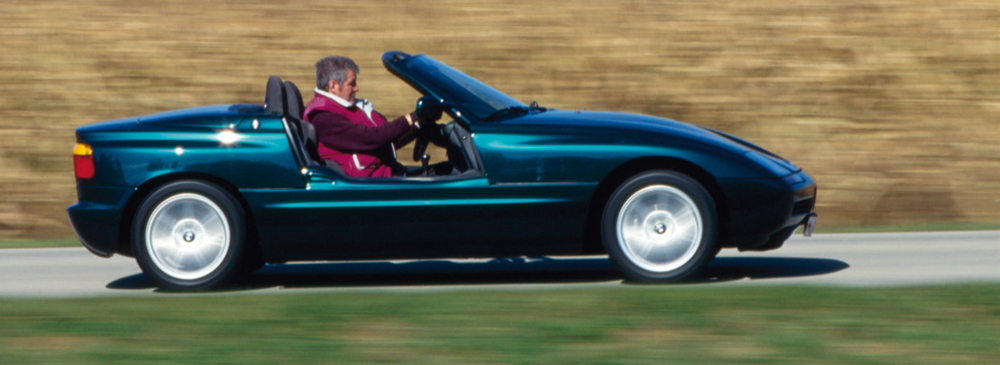
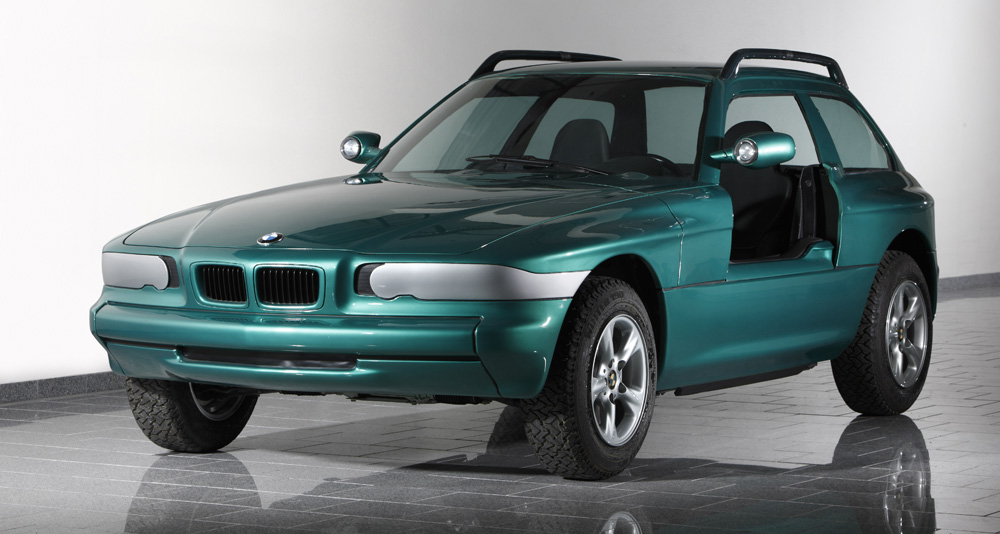
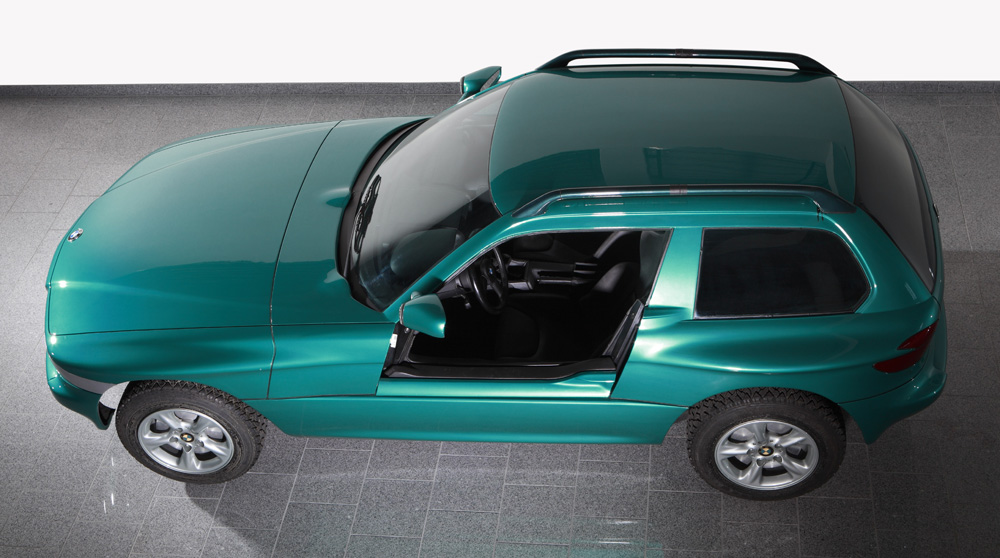
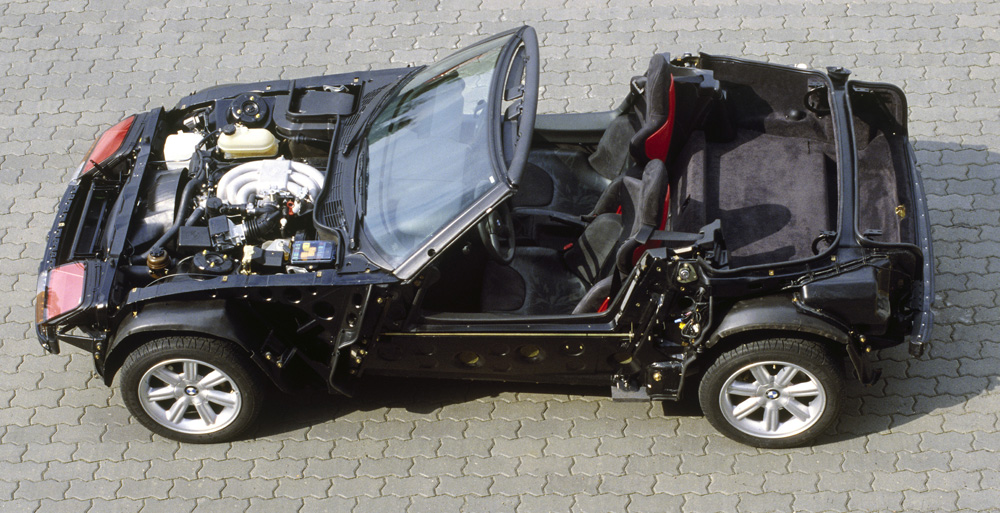
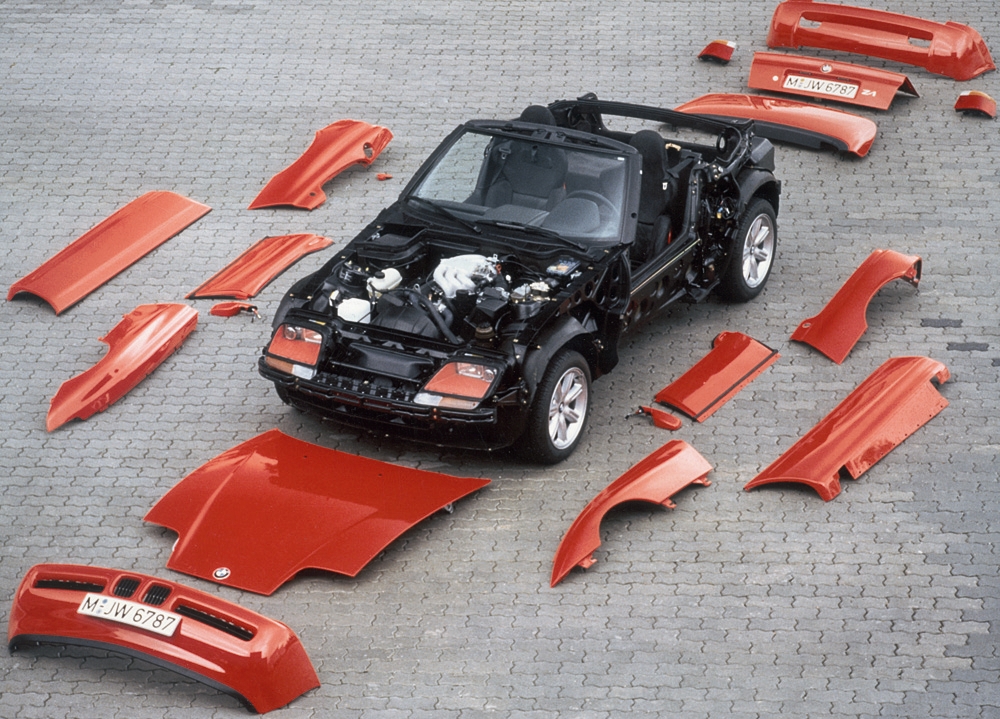
|










